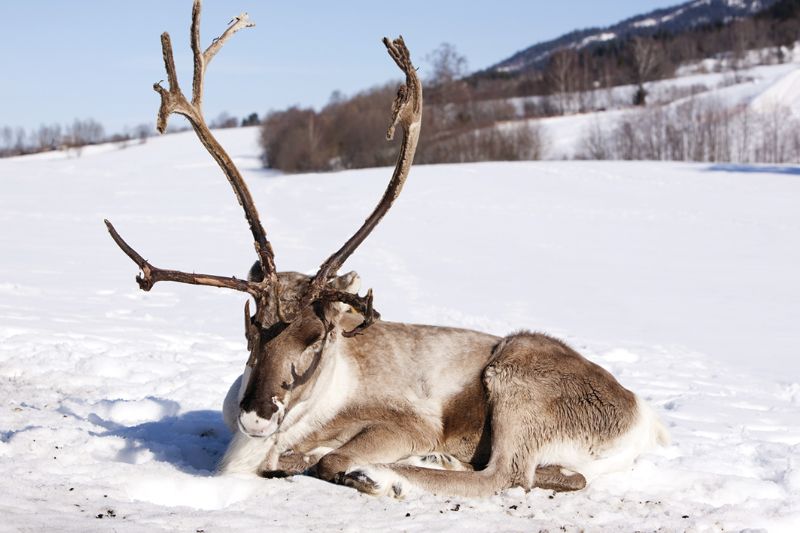- Home
- News, Articles & Reviews
We are hiring! Please click here to join our growing magazine delivery team in Gloucestershire!
Areas
Pets & Wildlife
Archive

The magic of the reindeer
All Areas > Pets & Wildlife > Wildlife Matters
Author: Maxine Raggatt, Posted: Friday, 23rd November 2018, 09:00
So, how did Rudolph the red-nosed reindeer get his name exactly? Well, it just so happens that reindeer do have pretty magical noses, as they can warm up the freezing air they inhale before it reaches their lungs.
The inside of a reindeer’s nose is a rather large surface area shaped like a spiralled seashell. Towards the surface of their noses, they have a large volume of blood vessels, which keep the mucus inside the nasal structure constantly heated up to instantly warm the air being inhaled.
So, the colder the air, the warmer the blood vessels get, sometimes causing a reddish glow to the nose through a thin blanket of surface fur. The mucous membranes in the nose also emit a small amount of moisture to be inhaled with the air so that it isn’t too dry when it reaches the lungs. When it is exhaled, the mucous membranes recover the humidity, so reindeer don’t have to eat snow.
Their bodies keep them toastie in the cold months
Reindeer are built for the cold, so their amazing bodies keep them toastie through the cold months. They have a two-layer coat – one underfur coat which is densely packed and a shaggy top layer to create great insulation. The layers of fur trap air, which helps to keep them buoyant while in water during migration, as they will often cross rivers and lakes. Their feet are quite large and are split into two claws, which they use to dig through the snow to find food.
Both male and female reindeer grow antlers on a yearly basis. The bone has no nerves so they can be used as weapons to fend off predators without causing themselves harm. Males tend to develop new antlers around February and shed them by December once the mating season has ended and testosterone drops. Females retain theirs over the winter while pregnant so they can be used to help with digging for food to nurture their unborn babies. The females will produce a new set of antlers around May.
Reindeer (also known as caribou) in North America, can also be found in North Asia, Siberia, Alaska, and Canada. Some populations of reindeer can migrate up to 3,000 miles per year.
Reindeer have many predators
As they migrate for grazing on summer greens and mating, there are many predators along the way. These come in the form of polar bears, brown bears, wolves and also golden eagles which prey on the calves. Black flies and mosquitoes are also known to swarm around reindeer in the summer months to suck their blood, which can cause enough distress to interfere with feeding and calving behaviours.
A pregnancy lasts about 230 days, and they give birth to a single calf in May/June. Reindeer tend to live for around 12-15 years, but this can vary greatly.
As Christmas Eve approaches, remember to leave out milk and cookies for Father Christmas, and of course carrots for his magical reindeer! Will you be lucky enough to spot Rudolph’s nose shining brightly in the sky on the eve of Christmas?Other Images
Copyright © 2024 The Local Answer Limited.
Unauthorized use and/or duplication of this material without express and written permission from this site's author and/or owner is strictly prohibited. Excerpts and links may be used, provided that full and clear credit is given to The Local Answer Limited and thelocalanswer.co.uk with appropriate and specific direction to the original content.More articles you may be interested in...


© 2024 The Local Answer Limited - Registered in England and Wales - Company No. 06929408
Unit H, Churchill Industrial Estate, Churchill Road, Leckhampton, Cheltenham, GL53 7EG - VAT Registration No. 975613000You are leaving the TLA website...
You are now leaving the TLA website and are going to a website that is not operated by us. The Local Answer are not responsible for the content or availability of linked sites, and cannot accept liability if the linked site has been compromised and contains unsuitable images or other content. If you wish to proceed, please click the "Continue" button below:




